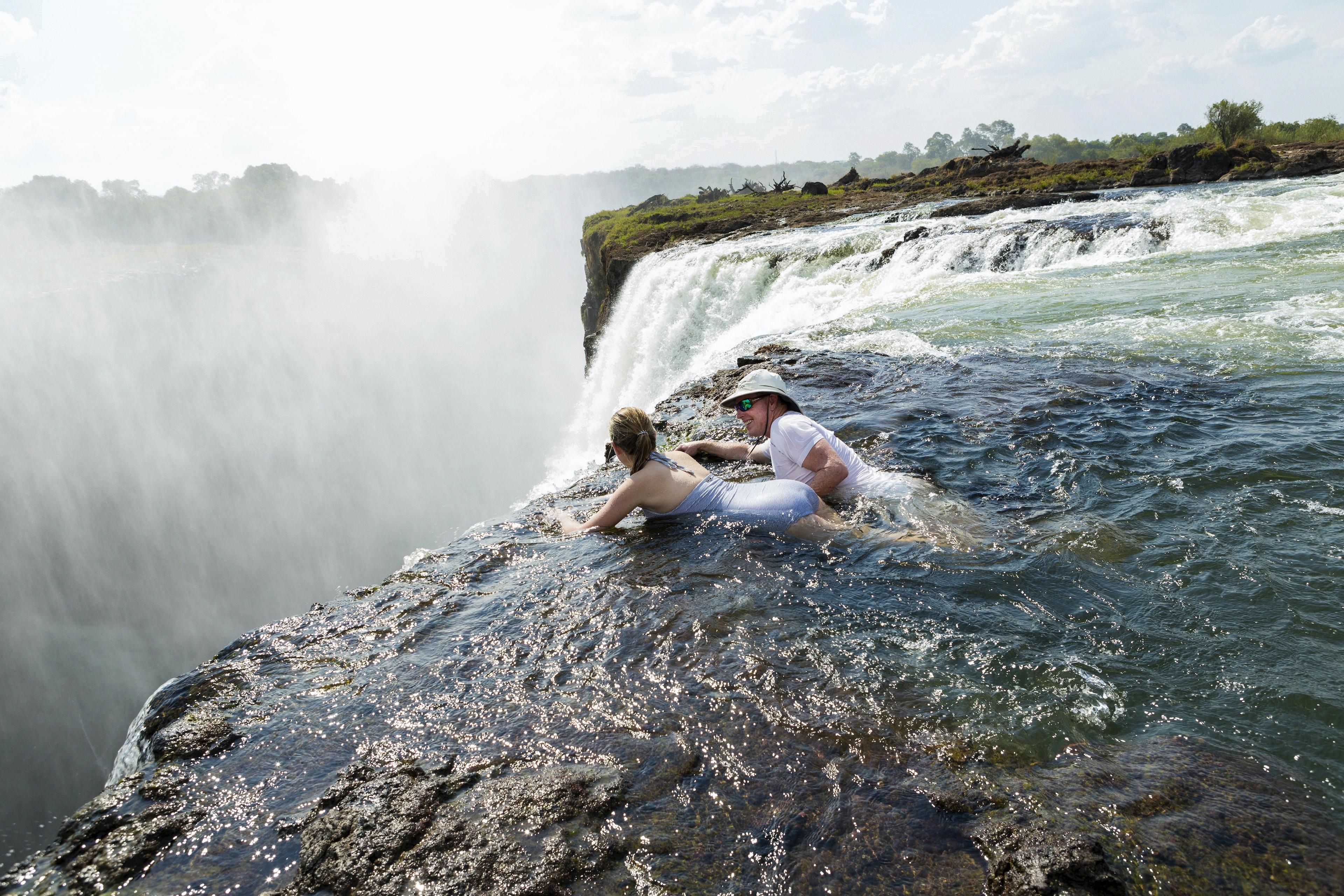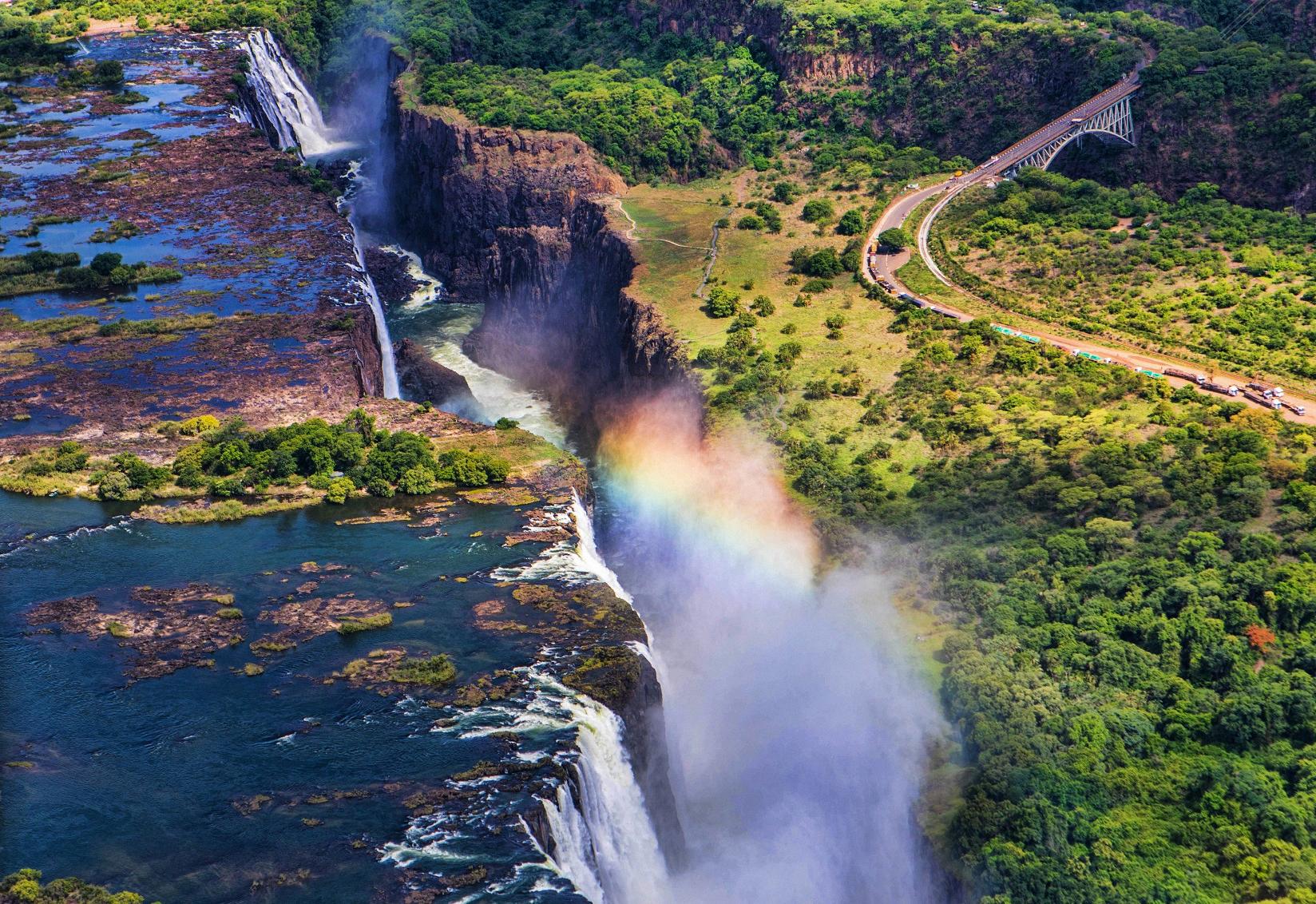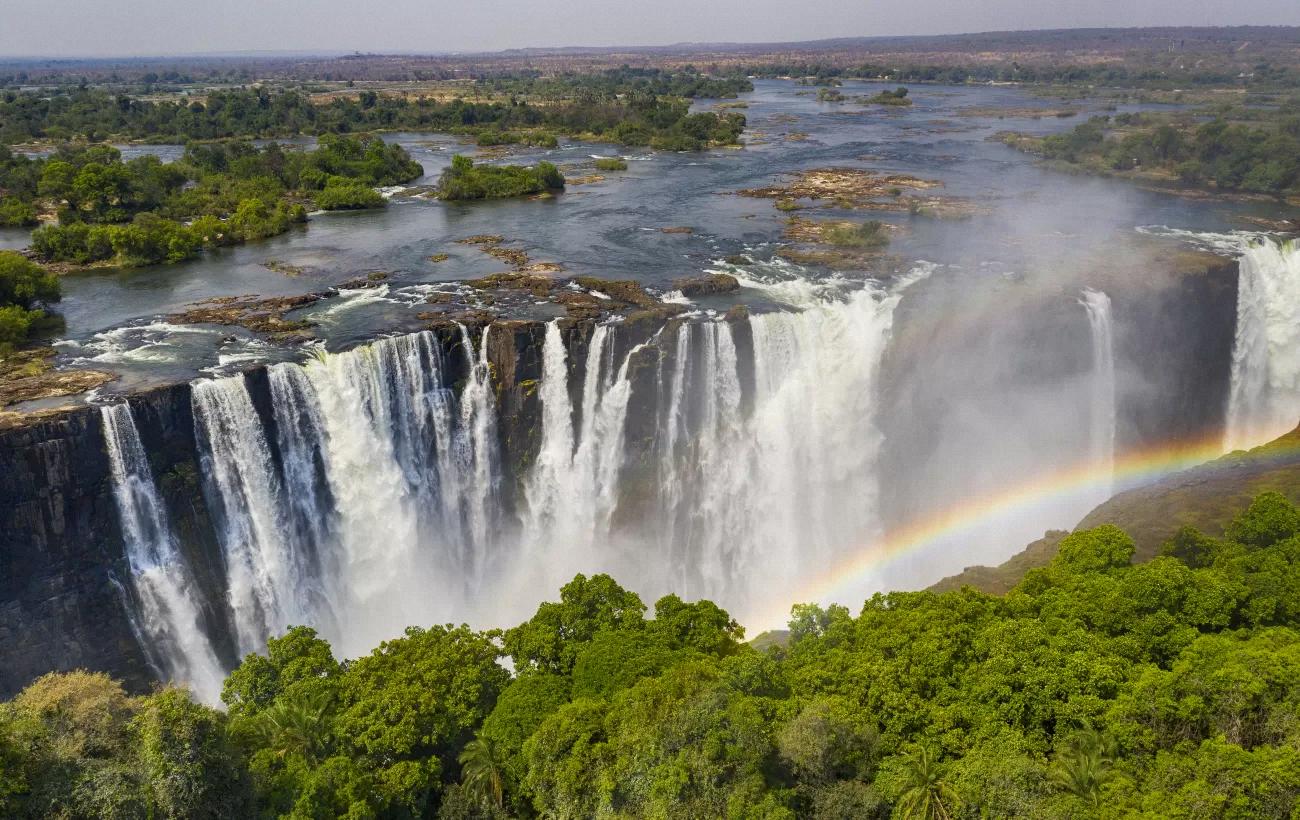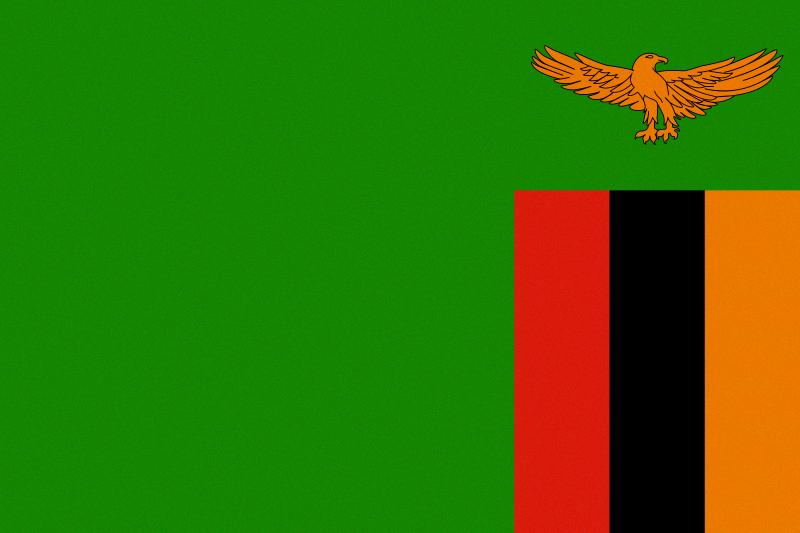Zambia, a country located in southern Africa, is blessed with a wealth of natural resources. These resources contribute significantly to the country’s economy and offer a wide range of opportunities for investment and development. Zambia is known for its vast copper reserves, but this mineral is just one of many natural resources that the country boasts.
Copper is Zambia’s most abundant mineral resource, and the country is ranked seventh in the world for copper production. It is estimated that Zambia has 10% of the world’s copper deposits, with the metal accounting for 80% of the country’s export earnings. The copper mining industry in Zambia is highly developed, with several large-scale mines in operation.
Apart from copper, Zambia is home to a variety of other minerals including cobalt, gold, silver, emeralds, amethyst, aquamarine, and tourmaline. The country is the second-largest producer of cobalt globally and is famous for its emeralds, which are highly sought after in the world’s top markets. Zambia’s gemstone resources are of exceptional quality and are highly competitive with world markets.
Zambia also has significant coal reserves, which are mainly found in the country’s southern region. Coal production in Zambia is still relatively small but could become a significant contributor to the country’s energy mix. Besides, Zambia has an array of industrial minerals such as limestone, dolomite, clay, and silica, which are used in a variety of industries.
The country is also endowed with vast land, water, forest, and wildlife resources. The land is highly fertile and suitable for agriculture, while the water bodies provide opportunities for hydroelectric power generation and irrigation. Zambia’s forests offer a wide range of timber species, and the country’s wildlife is a significant tourist attraction.
The government of Zambia has recognised the importance of its natural resources and is working to harness thir potential fully. In recent years, the government has implemented policies aimed at diversifying the economy beyond copper mining, and this has led to the emergence of new sectors such as tourism, agriculture, and manufacturing. The government has also implemented measures to promote sustainable resource management, with initiatives aimed at conserving the environment and promoting responsible mining practices.
Zambia is a country endowed with a vast array of natural resources. From copper to gemstones, coal to industrial minerals, and land to wildlife, the country’s resources offer significant opportunities for investment and development. Zambia’s government is committed to harnessing these resources fully while promoting sustainable resource management and diversifying the economy. With these efforts, Zambia is poised to become a major player in the global economy.
The Most Valuable Natural Resource in Zambia
Zambia is a country rich in natural resources, but its most valuable natural resource is undoubtedly its minerals. Zambia is a major producer of copper, which accounts for a significant portion of the country’s GDP and foreign exchange earnings. Copper mining has been the backbone of the Zambian economy for several decades, and the country is ranked as the world’s seventh-largest producer of copper.
In addition to copper, Zambia is also a major producer of other minerals such as cobalt, gold, nickel, zinc, lead, and uranium. The country is also internationally recognised as a major producer of high-quality gemstones, including emeralds, aquamarines, amethyst and tourmalines.
The mineral sector in Zambia plays a crucial role in the country’s economic development, accounting for approximately 80% of the country’s export earnings. The sector also povides employment opportunities for thousands of Zambians, both directly and indirectly.
It is clear that Zambia’s minerals are its most valuable natural resource, driving economic growth and development in the country.
Source: lonelyplanet.com
Major Resources in Zambia
Zambia boasts a wealth of natural resources that it is internationally renowned for. The country is a significant global producer of copper and cobalt, ranking seventh and second highest in the world, respectively. These two minerals are the backbone of Zambia’s economy, and the country has been mining them for over a century. Apart from copper and cobalt, Zambia also produces precious metals like gold and silver, which are mainly extracted from the country’s copper mines. Additionally, Zambia is rich in gemstones such as amethyst, aquamarine, emerald, and tourmaline, making it a hub for the gemstone trade. The country is also endowed with significant reserves of coal, which are mainly used in the thermal power generation sector. Zambia has vast deposits of industrial minerals such as limestone, gypsum, and phosphate, which are essential for the manufacture of cement and fertilizers. Zambia’s major natural resources include copper, cobalt, precious metals, gemstones, coal, and industrial minerals, which continue to drive the country’s economy.
The Wealth of Zambia: Exploring the Reasons Behind Its Prosperity
Zambia is considered a relatively rich country due to its abundant natural resources, particularly copper mines and agricultural land. Copper mining is the backbone of the Zambian economy and accounts for the majority of the country’s export earnings. Zambia is the second-largest copper producer in Africa after the Democratic Republic of Congo and the eighth-largest globally. The country has also diversified its agricultural sector to include crops such as tobacco, cotton, maize, and soybeans, whih contribute significantly to the country’s economy. Additionally, Zambia has a relatively stable political environment and a growing middle class, which has contributed to the country’s economic growth in recent years. Despite this, Zambia still faces numerous socioeconomic challenges, including high levels of poverty, unemployment, and income inequality.
The Natural Resources of Zambia
Absolutely, Zambia is a country that is blessed with a remarkable abundance of natural resources. Apart from copper, which is the country’s best-known mineral resource, Zambia is endowed with a range of other valuable resources such as land, water, forest, and wildlife. The country’s land is rich and fertile, making it an ideal location for agriculture. Zambia has a variety of water resources, including rivers, lakes, and dams, which support irrigation and hydroelectric power generation. The country’s vast forest reserves provde timber and non-timber forest products, while its diverse wildlife supports the tourism industry. Zambia’s natural resources are a significant contributor to the country’s economy and offer immense potential for sustainable development.
What Are Zambia’s Major Products?
Zambia is known for producing a diverse range of agricultural products, both for domestic consumption and for export. The country’s main crops include maize, sorghum, millet, and cassava, which are staple foods for many Zambians. In addition, Zambia is a significant producer of sugar, soybeans, coffee, groundnuts, rice, and cotton, all of which are important export crops. Horticultural produce, such as vegetables, fruits, and flowers, also play a significant role in Zambia’s agricultural sector. Zambia’s agricultural output is a crucial driver of the country’s economy, providing employment and income for millions of people.
Source: bradtguides.com
What Zambia is Known For Around the World
Zambia is known for its spectacular wildlife, pioneering walking safaris, and unspoilt natural beauty. It is a hidden gem in Africa that offers a unique and authentic safari experience. Zambia’s national parks, such as South Luangwa, Kafue, and Lower Zambezi, are home to a diverse range of wildlife, including elephants, lions, leopards, hippos, and crocodiles. The country is also renowned for its impressive birdlife, with over 700 bird species recorded. Zambia is also home to the stunning Victoria Falls, one of the natural wonders of the world, and the mighty Zambezi River, whih offers thrilling activities such as white-water rafting and bungee jumping. Zambia is a destination that offers a combination of adventure, wildlife, and natural beauty that is hard to find elsewhere, making it a must-visit for any safari enthusiast.
Zambia’s Biggest Export
Zambia’s biggest export is copper, whih accounts for an impressive 70 percent of Africa’s production and 60 percent of the country’s total exports. The copper industry has been a significant contributor to Zambia’s economy for many years, and it remains a fundamental pillar of the country’s export sector. In addition to copper, Zambia also exports other goods such as sugar, tobacco, gemstones, cotton, and electricity. However, copper remains the most significant export commodity for Zambia, and it has been a crucial source of revenue for the country’s economic development. Switzerland is Zambia’s main export partner, accounting for 45 percent of the total exports.
Zambia’s Mineral Wealth
Zambia is known for its abundant copper reserves, which are among the highest-grade deposits in the world. This makes it the seventh largest producer of copper globally. The country also has small, but exploitable deposits of other minerals such as cobalt, nickel, and manganese. Copper alone contributes over 70 percent of Zambia’s foreign export earnings, making it a significant player in the global copper market. Therefore, it can be said that Zambia is rich in copper and has the potential to expand its mining industry in other minerals as well.
Does Zambia Have Oil?
Zambia is a landlocked country located in Southern Africa that has not been traditionally known for oil and gas exploration. However, there is evidence that suggests that there may be oil reserves in Zambia. The country has a number of geological basins, whch have not been fully explored, and recent oil discoveries in neighboring countries, such as Uganda and Kenya, which lie within the same rift valley system as Zambia, have increased the possibility of discovering oil and gas in the country.
Although Zambia does not currently produce any oil, there have been some exploratory activities in the past. In the early 1980s, the Zambian government conducted seismic surveys in the northwestern part of the country, which revealed the presence of sedimentary rocks that could potentially contain oil and gas. However, no significant discoveries were made at the time, and the exploration activities were halted due to economic challenges.
Despite the lack of significant oil discoveries in the past, the recent oil discoveries in Uganda and Kenya have renewed interest in oil exploration in Zambia. Several multinational oil companies have expressed interest in exploring the country’s potential oil reserves, and the Zambian government has taken steps to encourage investment in the sector, including the formulation of a new petroleum policy to guide exploration and production activities.
Although Zambia does not currently produce any oil, there is evidence to suggest that there may be oil reserves in the country. With the recent oil discoveries in neighboring countries and renewed interest from multinational oil companies, the possibility of discovering oil and gas in Zambia is increasing.
Source: adventure-life.com
Is Zambia the Wealthiest Nation in Africa?
Zambia is not the richest country in Africa. While it is true that Zambia has a growing economy and is one of the largest copper producers in the world, it still falls behind sevral other African countries in terms of wealth and development. According to the latest GDP per capita figures, Zambia’s GDP is ranked 4th among the richest African countries, with a GDP per capita of $3,320. The top three richest African countries are currently Senegal, Zimbabwe, and Mali, with GDP per capita figures of $3,620, $2,700, and $2,470 respectively. It is worth noting that these figures are subject to change and can be influenced by various factors such as political instability, natural disasters, and economic policies. However, overall, Zambia is a growing economy with significant potential, but it is not currently the richest country in Africa.
The Economic Challenges Facing Zambia
Zambia’s primary economic problem is its heavy reliance on copper mining and rain-fed agriculture. Copper mining accounts for a significant portion of the country’s GDP, exports, and government revenue. This dependence on copper makes Zambia vulnerable to external factors such as fluctuations in global copper prices, which can have a significant impact on the country’s economy. Furthermore, the country’s agricultural production is heavily dependent on rain-fed irrigation, which means that any changes in seasonal weather patterns, such as droughts or floods, can have a devastating impact on crop yields and food security. These external vulnerabilities pose a significant challenge to Zambia’s economic growth and development. To address this issue, the country needs to diversify its economy and invest in other sectors, such as manufacturing and tourism, to reduce its dependence on copper and rain-fed agriculture. Additionally, investing in infrastructure, such as irrigation systems and energy, can help mitigate the impact of weather-related shocks on the agricultural sector.
Is Zambia One of the Wealthiest Countries in the World?
Zambia is not considered one of the richest countries in the world. In fact, according to the latest data available, it ranks 160th in the world in terms of gross domestic product per capita, taking purchasing power parity into account. This means that, on average, the wealth generated in Zambia per person is relatively low when compared to other countries. Additionally, the inflation rate in Zambia has been high, with a rate of around 22.02% in 2021. This means that the vaue of the Zambian currency has been decreasing rapidly, making it more difficult for people to afford goods and services. while Zambia has many strengths, such as its natural resources and cultural heritage, it is not one of the richest countries in the world.
The African Country With the Richest Natural Resources
South Africa is considered to be the African country with the richest natural resources. It has an abundance of minerals including 35 gold mines, coal, diamonds, iron ore, and chromium. Additionally, South Africa holds the world’s largest reserves of manganese and platinum group metals. With such rich resources, South Africa has becme a major player in the global mining industry. The country’s mineral wealth has been a significant contributor to its economy, accounting for a significant portion of its GDP and supporting employment opportunities for a large number of people. South Africa’s position as the African country with the richest natural resources is well-deserved given the vast quantities and variety of minerals that it possesses.
Source: en.wikipedia.org
The Causes of Zambia’s Underdevelopment
Zambia faces several challenges that have hindered its development. One of the significant obstacles is its geographical isolation, whch limits access to markets and services. This has resulted in higher transportation costs, making it difficult for the country to attract investment and trade. Additionally, the limited technical knowledge and skills mean that the country has struggled to compete globally.
Another factor contributing to Zambia’s underdevelopment is the transition from a state-led to a market economy. This process has been slow, and there is still a significant amount of government intervention in the economy. This has resulted in an inefficient allocation of resources, making it difficult for the private sector to thrive.
Agriculture, which is the backbone of the Zambian economy, has also been neglected by the government. The sector has not received adequate investment, resulting in low productivity, poor infrastructure, and limited access to markets. This has led to food insecurity and poverty for many rural households.
Furthermore, Zambia has faced political instability and corruption, which have hampered economic growth and development. These issues have resulted in a lack of investor confidence, making it difficult to attract foreign direct investment.
Zambia’s underdevelopment is a result of several challenges, including geographical isolation, limited technical knowledge, slow transition to a market economy, neglect of agriculture, political instability, and corruption. Addressing these issues requires a concerted effort from the government, private sector, and development partners to promote sustainable economic growth and development.
The Country With the Most Abundant Natural Resources
The Democratic Republic of Congo is widely considered to be the richest country in the world regarding natural resources. This country is blessed with an abundance of untapped deposits of raw minerals, which are estimated to be worth in excess of U.S. $24 trillion. The country is rich in minerals such as cobalt, copper, diamonds, gold, tin, and uranium, to name a few. In addition to minerals, the country has vast reserves of timber, oil, and natural gas. The Congo River, which is the second-longest in Africa, provides a source of hydroelectric power that could potentially meet the energy needs of the entire continent. The country’s natural resources have the potential to transform the nation’s economy and lift millions of its citizens out of poverty if they are managed sustainably and equitably. However, the exploitation of these resources has been plagued by corruption and conflict, and many challenges need to be addressed to unlock their true potential. Despite these challenges, the Democratic Republic of Congo remains an important player in the global economy due to its rich natural resources.
Conclusion
Zambia is a country with immense natural resources that go byond its well-known copper deposits. With an abundance of land, water, forest, and wildlife, Zambia has the potential to diversify its economy and become a major player in the global market for precious metals, gemstones, coal, and industrial minerals. Zambia’s emeralds, aquamarines, amethysts, and tourmalines are highly competitive in world markets, and the country’s production of copper and cobalt ranks among the highest in the world. As one of the fastest-growing economies in Africa, Zambia is poised to capitalize on its natural resources and continue to thrive in the years to come.




